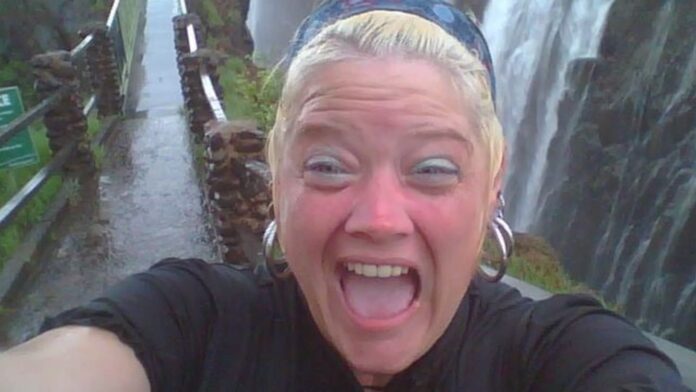I’m an avid traveler, as well as a community journalist and photographer, and for years, I dreamed of taking a year-long trip around the world. Much as I love my work, at times my modest $30,000 a year salary has made it tough to fund trips.
By being intentional about my spending, I have been able to afford rent, and cover the basics, as well as some fun, shorter adventures. But the money I wanted to stash away for that larger dream trip was often eaten up by an unexpected car repair, a few dinners out that added up, or sometimes purchases I didn’t even remember making.
For two years, I struggled with online budgets and tools that felt overly complicated and overwhelming. So I just avoided them all together. At the end of two years, I had saved less than an additional $1,000 more for the trip and felt a bit defeated when my year-end bank statement arrived.
I realized that if I truly wanted to pursue this life of travel, I needed to make some significant financial changes.
It took seven years, in part because I still traveled during this time, but I reached my goal of $21,000 to fund my airfare and spend a year on the road in 2014 and 2015. During this time, I was a digital nomad, writing and selling articles about my experiences.
Since then, the financial strategies I learned from this time have allowed me to continue to travel all over the world. Here’s how.
I sat down and ran my numbers
I chose to completely simplify my saving strategy. First, I reviewed my expenses and decided I could realistically set aside $300 a month. I saved less during the months I had my adventures.
My apartment, car insurance, and other monthly bills weren’t optional, but I examined what was flexible. My credit card statement was a good source of information.
I was shocked at how much I spent on food and items like books that I could have borrowed from the library. Once I came to this realization, I couldn’t unsee it.
It became obvious that I spent a lot more than I thought, often on frivolous things like $7 in drinks and snacks each time I filled my car with gas.
With my numbers in hand, I was able to move forward with the next steps.
I made small changes that added up over time
Planning meals ahead, setting aside a small budget for a restaurant visit each week if I was so inclined, ended up saving me about $50 a week.
I began eating better and was more intentional about the ingredients I was buying, because I otherwise went home from the grocery store with a full bag of items that didn’t fit well together.
Video by Jason Armesto
Even something simple as packing my lunches saved a lot, too. Eliminating those $8 salads and sandwiches I would buy in the past because I didn’t plan ahead helped me to save at least $25 a week, which I could put toward my trip.
Every small step made a big difference.
I started a dedicated bank account for my goals
I knew that one of the things that would help me succeed in my goal is if I made it very simple to deposit money, and very cumbersome to withdraw it. I understood that I would withdraw less from my trip fund if it took significant effort and time to do so.
So in 2008, I opened a dedicated account for my trip fund in a bank with a local branch, where I had no other accounts. I made sure that I didn’t set up an online account or get a debit card attached to it. That way, I would have to see a bank teller in person to get the money.
Video by Helen Zhao
All the effort to withdraw funds made me consider if an expense was really worth it. If I had to stop and ask myself, “Do I really need this?” the answer was usually, “No.”
Over time my resolve was buoyed as I saw the balance increase with my bi-monthly deposits.
The out of sight, out of mind strategy worked well for me. Using direct deposit meant I never had that money in hand that I intended for my journey, so I was less tempted to spend it elsewhere.
I still use this strategy today for other saving goals. My trip fund is always in action.
I looked for travel options that didn’t break my budget
When I started researching my trip, I prioritized spending on special, memorable activities, and stayed in line with my lodging and food budget by choosing hostels and homestays with local families and finding options for simple meals at local stores and restaurants.
By doing so, I was able to explore Kenyan wildlife on a tent-camping safari, hike a famous mountain pass in New Zealand, and experience the summer solstice at Machu Picchu. I raised money in my hometown to help send money to farmers in Las Minitas, Nicaragua, to open a preschool, and then spent three months with them building it.
Video by Helen Zhao
I spent a week exploring the Peruvian Amazon, volunteered as a photographer with linguists documenting rare languages in Australia and Senegal, and was invited to spend New Year’s with a family in Zambia. My host family and friends I made as an exchange student in Germany welcomed me, and then later on, I was fortunate to reconnect with them for two months.
All of these experiences and opportunities, and the people I met along the way, made a lasting impact on me.
I stuck with the strategies that worked for me
Over the last several years, my budgeting approach has allowed me to scuba dive in Honduras, visit friends in Germany, and tick off my bucket list trip to the Galápagos Islands in Ecuador. The next stops on my itinerary are Thailand and Cambodia.
There are many accessible services online and apps for personal budgeting that are easy to use, but I’ve found that approaching this in a more analog way, at least for accomplishing this particular money goal, worked the best for my needs.
Video by Helen Zhao
I’ve realized there are a number of key strategies that have never steered me wrong:
- Examine the costs associated with your goal or dream and estimate how much, minimally, you need to meet your goal. It doesn’t have to be exact but realistic.
- Set a timeline. You can save more or less, depending on how soon you want to accomplish your goal.
- Consider how much you can save each paycheck, keeping in mind that there are always unexpected expenses. You don’t want to aim too high and then be discouraged if you keep having to withdraw to make ends meet.
- Schedule direct deposits through work so you don’t see the money you’re saving. If it’s not possible, make planned deposits into the account.
My trip fund has also sometimes unavoidably acted as my emergency fund, and that is okay. Things happen, so don’t beat yourself up if you need to pull from your funds if, for example, your car’s timing belt breaks or your exhaust rusts off, like mine did.
It takes a lot of work to meet your money goals. My best advice is that every few deposits, you check on your current total and then physically mark it down. Seeing your balance increase will motivate you.
When you reach your goal, really take time to enjoy the win. Don’t forget to revel in your well-deserved success.
Kris Dreessen is a writer, photographer and traveling aficionado who has become adept at saving for her bucket list trips. She has visited more than 35 countries and likes to share her knowledge with others about how to create adventures on a limited budget.
More from Grow:













